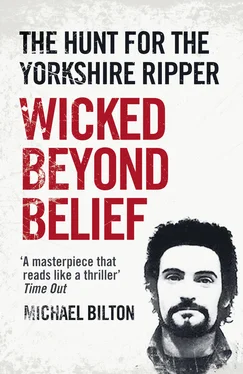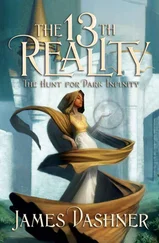She had just reached the row of houses where she lived when she was grabbed from behind. Immediately she screamed loudly and her attacker urgently put his hands over her mouth, telling her: ‘Shurrup, shurrup,’ a couple of times. She still remembered this vividly because his accent sounded local. As a Scot living in Yorkshire, she noticed immediately. She screamed out again and this time he hit her on the back of the head with his fist and pushed her into a low wall, where she received a graze to her face – her only real injury. One of the prison officers opened his bedroom window to see what was happening, and then swiftly came running downstairs to help, chasing after the attacker, but losing him.
The police came and the victim gave a statement. She was told to go to the local police station the following day, to help provide a photofit description. Next morning her sister accompanied her, but while she was there, she said, she felt as if she was the one under suspicion and thought the police did not take her seriously. She was very glad the prison officer could confirm her story. Before she went to the police station she had looked at a photograph of the pop singer ‘Cat’ Stevens – because the attacker looked so similar. He had been a man in his mid-twenties of medium build and about five feet ten inches tall, with long dark hair, dark eyebrows, a beard and moustache, and a similar tuft of beard between chin and mouth. Years later, when the Yorkshire Ripper was apprehended and photographs of Peter Sutcliffe appeared in the newspapers and on television, she said out loud to her family: ‘I’m sure that’s the man who attacked me …’ But after she made her initial complaint she never heard from the police again.
Almost two years later a twenty-eight-year-old student was attacked twenty-five miles away in Bradford. On 11 November 1974 Gloria Wood was approached as she walked across a school playing field some time between 7.30 and 8 p.m. A man offered to carry her bags and then attacked her about the head, causing severe injuries and a depressed fracture of the skull that left a crescent-shaped wound. The weapon was thought to be a claw hammer. According to the victim, the man had worn a dark suit and looked smartly dressed. She couldn’t provide a photofit, but described him as being in his early thirties, 5 feet 8 inches tall and of medium build. He had dark curly hair to the neck, a short curly beard to the hairline. She was unable to remember how he spoke.
The summer of 1975 was long and hot. The sun continued to blaze down all day from clear blue skies for weeks on end. Clothes dried quickly on washing lines, reservoirs emptied, drought warnings were issued, the harvest was safely gathered in and half the country had hay fever. On the edge of the Pennines in West Yorkshire, a mile from the village of Silsden and its early eighteenth-century parish church of St James, lived the Browne family. Upper Hayhills Farm stood nearly 700 feet above sea level. It was there that Mrs Nora Browne bred dogs. She and her husband, Anthony, had four daughters, including fourteen-year-old twins, Tracey and Mandy. Like most parents they laid down house rules and expected their children to abide by them.
One August evening, with only a week or so to go before they returned to school, the twins went visiting friends in the village. Since it was still the school holiday, they were told to be home by 10.30 on what was a balmy, clear and moonlit night. Tracey had hung on too long saying goodbye to her pals while her sister went ahead up Bradley Road, knowing their dad would ‘go mad’ if they were late. As it was a clear summer’s night in a remote rural area, their parents were not unduly concerned that Mandy arrived home first, minus her sister. The girls had walked up and down this country lane on their own dozens of times.
Tracey meanwhile was struggling, her young frame tottering uphill in platform-soled sandals. Her feet ached and as she sat down on a large stone beside the road to take off her sandals and rub them she noticed a stranger, in his late twenties or early thirties, also walking up the lane. He stopped briefly to look at her, standing only a few feet away as he drew level. Then he walked on. She wasn’t afraid and assumed the man was living near by. Her only worry was to get home to avoid her father getting angry with her. The man was clearly dawdling since Tracey soon caught him up again.
‘There’s nothing doing in Silsden, is there?’ he said.
‘Not really,’ she replied, walking beside him.
He then asked how far she had to go, and she answered casually: ‘About a mile.’ When he asked, she told him her name. He said his was ‘Tony Jennis’. Tracey had a friend called Tony Jennison with whom she had spent a lot of time during the holidays playing at a local park. She believed this must be a coincidence, but kept the thought to herself. He then asked if she had a boyfriend and she said she had and that he lived in the village.
They continued walking in silence for a while, so Tracey got a good look at the man, who kept blowing his nose, as if affected by the high pollen count. His knitted V-neck cardigan with two pockets at the front was worn over a light blue open-necked shirt. He had dark Afro-style crinkly hair and beard. He wore flared, dark brown trousers with slit pockets at the front, and brown suede shoes. Suddenly, in his quiet, high-pitched voice, he said: ‘My pal normally gives me a lift home but he’s in the nick for drink driving.’ That term ‘the nick’ stuck in her mind. The man seemed to be dropping back to tie his shoelace or blow his nose. He said he had a summer cold. Otherwise, he never took his hands out of his pockets. Tracey still had no reason to feel fear. Indeed, at times she stopped and waited for the man to catch her up. Finally they reached the gateway to the family farm and he hung back yet again. The pretty schoolgirl was about to turn towards the farmhouse. As well-brought-up kids do in the countryside, she intended to part on pleasant terms by thanking the stranger for his company. Instead she came under ferocious attack. Suddenly he rained down blows on her head and face. In his hand he held something heavy.
At that time a popular hero among young girls the world over was a handsome American tennis star who featured in the finals at Wimbledon. His name was Jimmy Connors and when he power-served to an opponent, he did something he became famous for. He let out an extraordinary grunt, ‘eeeu-uuuugggghhhhhh’, as he unleashed an excess of forceful energy through arm and shoulder and simultaneously exhaled air from his lungs. Tracey Browne remembered how, with each blow to her head, the man trying to kill her made a similar grunting noise.
‘Please don’t, please don’t,’ she cried as the first blow drove her to her knees beside the tarmacked road. Her immediate thought was that this was the notorious ‘Black Panther’ – an as yet unapprehended multiple killer being hunted by police for the kidnapping and murder of the heiress Leslie Whittle. She even shouted out the name, ‘Black Panther’, several times in the hope someone would hear her. To no avail. By now, lying at the roadside, she was in a dreadful state, blinded by both the shock of the attack and blood from her head filling her eyes.
Ultimately a car coming up the lane with its headlights on saved her life. The attacker put an arm under her legs, another round her waist. Scooping Tracey up, he tipped her like a sack of potatoes over a barbed-wire fence and into a field. Then he ran off. She heard his footsteps as he made good his escape. As she lay in the grassy field, she felt numbed by the force of the blows. Staggering around the field, she became disorientated, fearing the man might return and attack again. Covered in blood, she staggered towards a farm worker’s caravan, pleading for help. An elderly man took her in, then helped her to her parents’ farmhouse. She almost fell through the door, her mother gasping at the dreadful sight confronting her: ‘When she came through the door her jumper was squelching with blood.’ At first she thought someone had thrown a pot of paint over her daughter. But then her family saw a severe wound that appeared to leave a hole in the top of her head.
Читать дальше












